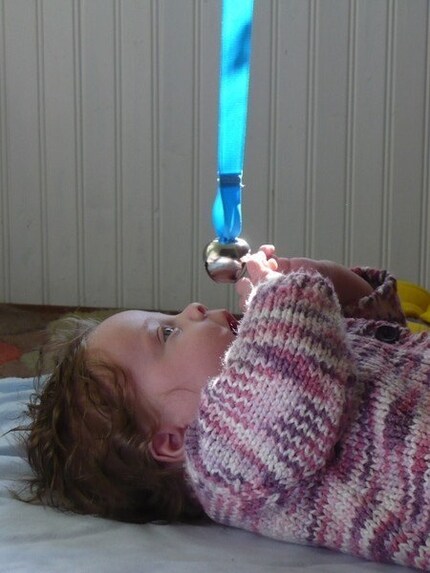We wanted to share some tips and ideas for parents or teachers who want to use the Montessori approach to teaching at home or school.
1. The environment matters lots. Have at least one room that is equipped with low shelves and child-friendly material. Everything in this room should be touchable -- no glass tables that are off limits or adult computer equipment.
2. Have material on these shelves that addresses your child's needs. For example, if your child does not yet read, your basics should include the Sandpaper Letters, Movable Alphabet, Sandpaper Numerals, Spindle Boxes, Red Rods, Pink Tower, Geometric Solids, and the Geometric Cabinet (or equivalent).
3. Create a reading corner in this room or another quiet room. Your book shelf should have non-fiction books ranging from information on bugs and plants to trucks and tractors.
4. Have mats for floor work so your child can spread work out on the floor. The mats are carpet about the size of a yoga mat.
5. Practice introducing new concepts in a simple way. Looking at a mirror, introduce colors using the Color Tablets. Say "red" as you pick up the red tablet. Repeat for the other colors. Pretend you are teaching a friend who doesn't speak English the names of the colors. You wouldn't make long sentences, right? Because the words would get lost in the discussion. The goal is to associate the new word with the object in the most streamlined way possible.
6. Is your child or student working? Resist the temptation to check up on them or interfere. The goal here is to let your child cultivate his or her powers of concentration, becoming absorbed in the material that he or she is using.
7. Are you in a classroom setting? Start the morning off with a short group activity to get all the children focused on the day after their commute to school.
8. Speak quietly. If you raise your voice to be heard over the din of children talking, the whole class will get louder and louder. Practice speaking more softly so that everyone has to be quiet in order to hear you.
9. Resist using "No" to correct your child. If you ask your child to hand you the blue tablet and he or she hands you the red tablet, say "that is red" and add "can you find the blue". Notice how we cut out a lot of words here such as "No, that's not the right one...don't you remember" and etc. Make this a strict practice.
10. Video tape yourself teaching your child, practice on adults and older children, and sit down at the end of the day for ten minutes with a cup of tea to reflect and write down a review of your day's teaching.
Montessori curriculum for homeschooling and classroom use is available on our site!























